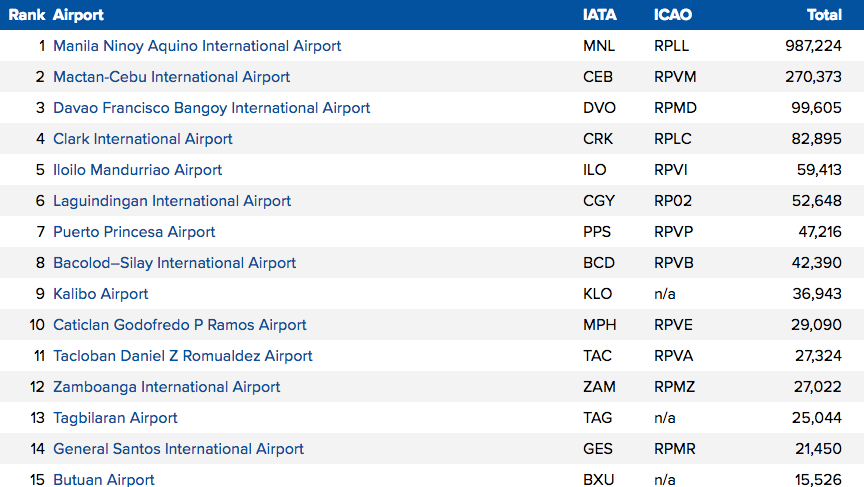Summary:
- The Bohol International Airport opened on 28-Nov-2018, replacing the space constrained Tagbilaran Airport;
- The new airport is expected to handle 2 million passengers in its first year compared to only 800,000 passengers per year for the now closed old airport;
- The new airport is located on Panglao island, which attracts over half of Bohol's visitors and is an increasing popular holiday destination.
The two airports are a short drive from each other (less than 10km). However, Tagbilaran Airport was much smaller and space-constrained because of its location near the centre of Tagbilaran, the capital of Bohol province. The old airport is being closed and its three letter designator (TAG) transferred to the new airport.
The new airport is expected to generate a significant increase in visitor numbers to Bohol province as accessibility improves. The new airport is expected to handle around 2 million passengers in 2019 compared to only 800,000 passengers per year for Tagbilaran.
TABLE - The now closed Tagbilaran Airport was the 12th largest airport in the Philippines based on weekly seat capacity; the new Bohol International Airport could quickly become the sixth largest based on near term growth projections Source: CAPA - Centre for Aviation & OAG (data: w/c 19-Nov-2018)
Source: CAPA - Centre for Aviation & OAG (data: w/c 19-Nov-2018)
The Tagbilaran Airport was operating at capacity while the Bohol International Airport has plenty of space for expansion as it is on a site that is 10 times larger. The new airport is also night rated, enabling Philippine carriers to start operating flights after dark.
Bohol province attracted 1.1 million visitors in 2017. Tourism authorities expect visitor numbers will double to 2.2 million by 2020. About 60% of Bohol visitors stay in Panglao island, which is connected to Tagbilaran city and the rest of Bohol via a short bridge.
Around two thirds of visitors are Filipinos travelling from other parts of the Philippines. However, the new airport is expected to attract new international flights, leading to a surge in international visitor numbers. The only international service at the moment is a PAL flight to Seoul. PAL also has three domestic routes from Bohol - Manila, Clark and Davao - some of which are operated by its subsidiary PAL Express.
Cebu Pacific and Philippines AirAsia compete against PAL on the core Manila route. Cebu Pacific's turboprop subsidiary Cebgo competes against PAL Express to Davao and also connects Bohol with Laguindingan.
There are no foreign airlines although authorities hope the new airport will attract them along with new international routes from Philippine carriers. Flights to China are an obvious target as China is the second largest and fastest growing source market for the Philippines. China accounted for 27% of foreign visitors to Panglao in 2016 despite the lack of direct flights.
Some visitors to Panglao/Bohol now travel via Cebu, the second largest city in the Philippines where a new international terminal opened earlier this year. The fastest ferry from Cebu to Tagbilaran is only two hours but more direct flights will certainly help attract more visitors. Panglao is known for its beaches and has the potential to become the leading alternative destination to Boracay.
Construction of the new airport began in 2015 and was accelerated under the Rodrigo Duterte administration. Mr Duterte, who has been a strong advocate for new airports and tourism, inaugurated the new airport on 27-Nov-2018. While construction was accelerated a couple of years ago the airport missed an initial Aug-2018 target date for opening, resulting in a three-month delay.
The new airport has an initial capacity to handle around 4 million passengers per year but a terminal expansion and runway extension is already planned to further boost capacity.
Bohol International is being marketed as the first "green" airport in the Philippines. One third of its energy needs are being generated from solar panels. It also uses solar technology to support a hot water system and has a rainwater catchment system that enables the collection and reuse of rainwater.